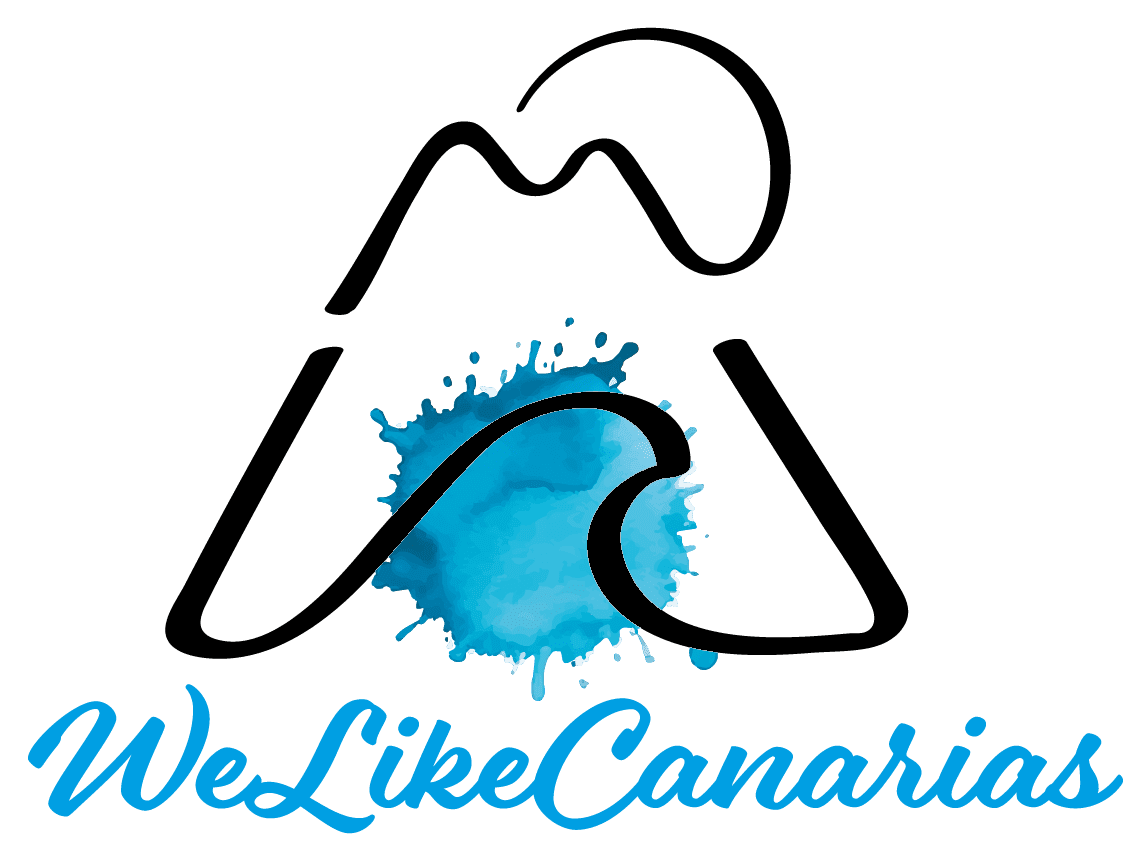Fuerteventura: Have you already discovered its hidden secrets of sand and sea?
Discover on your own the island of Fuerteventura, a unique corner of the Canary archipelago known as 'the island of calm'. With its endless beaches of golden sand, turquoise waters and a warm climate all year round, it is the perfect destination for lovers of nature and tranquility.
It is characterized by its impressive natural diversity, from extensive beaches of golden sand and crystal clear waters to volcanic landscapes that seem otherworldly. Visitors can discover the rich local culture, enjoy the unique flavors of Majorcan gastronomy and tour charming villages.
For nature lovers, Fuerteventura is a paradise. The island offers pristine beaches, nature reserves and outdoor activities such as hiking or water sports. This destination, the second largest in the Canary Islands, is perfect for those who want to explore on their own and enjoy unforgettable experiences in a unique environment.
Fuerteventura is the second largest island of the archipelago and the fifth most populated island of the Canary Islands.
Population of the island in 2023: 124,066 inhabitants
Capital: Puerto del Rosario
Name: Majorero/ Majorera
1. Geography and Climate of Fuerteventura
Fuerteventura has a contrasting landscape and a favorable climate, which makes it an attractive destination all year round.

Geographic Position
Located in the Atlantic Ocean, Fuerteventura is part of the Canary archipelago and lies about 97 km off the northwest coast of Africa. With an area of 1,659.74 km², it is the second largest island of the Canary Islands after Tenerife. The geography of Fuerteventura is marked by arid and mountainous terrain, where the wind has sculpted various reliefs over time. Its capital, Puerto del Rosario, is located on the east coast and is an important administrative center.
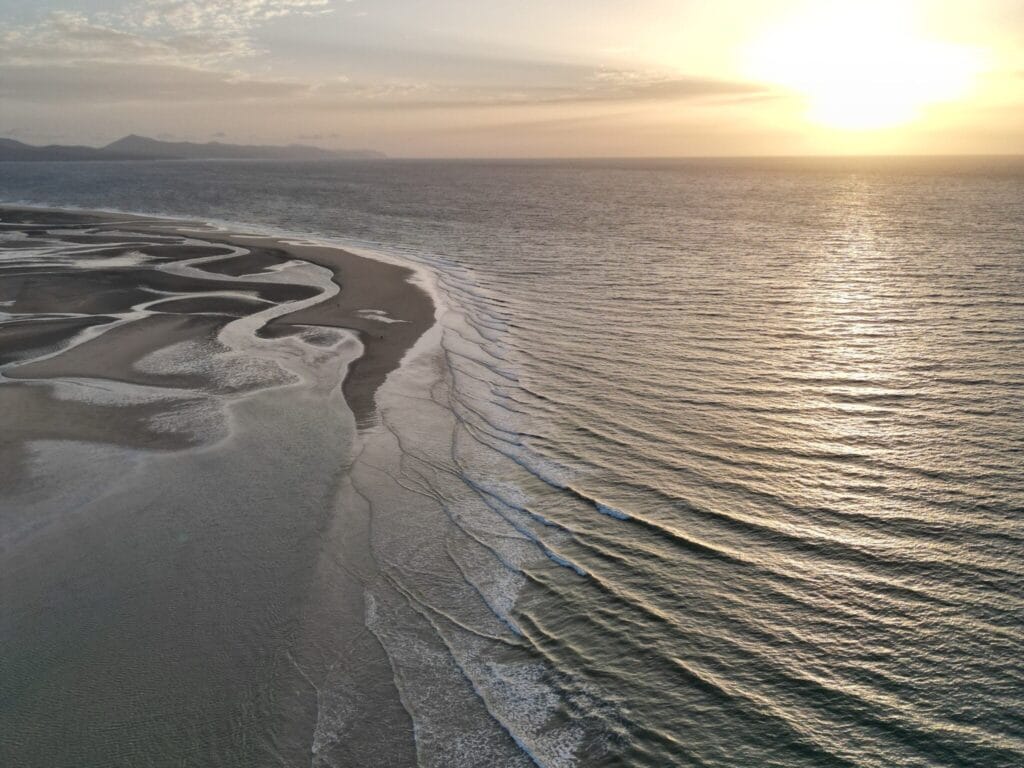
Fuerteventura Climate
The climate of this island is semi-arid, characterized by mild and pleasant temperatures throughout the year. The average annual temperature is around 22 degrees Celsius, which favors the practice of outdoor activities during each season. The summer months are warm, while the winters are mild, which attracts tourists from various places. The scarcity of rainfall contributes to a dry environment, ideal for those seeking to escape the cold.

How to get to and around Fuerteventura
From Fuerteventura Airport, transportation options are varied:
- Rental Cars: Taking advantage of the good road network, renting a car is a popular option for touring the island freely.
- Public Transportation: There are several bus lines that connect the main towns and tourist attractions.
- Cabs: Taxi services are available, offering a convenient alternative for getting around.
2. History and Culture
History and culture are fundamental aspects that shape the identity of Fuerteventura. This corner of the Canary archipelago has a fascinating past that is reflected in its heritage and traditions.
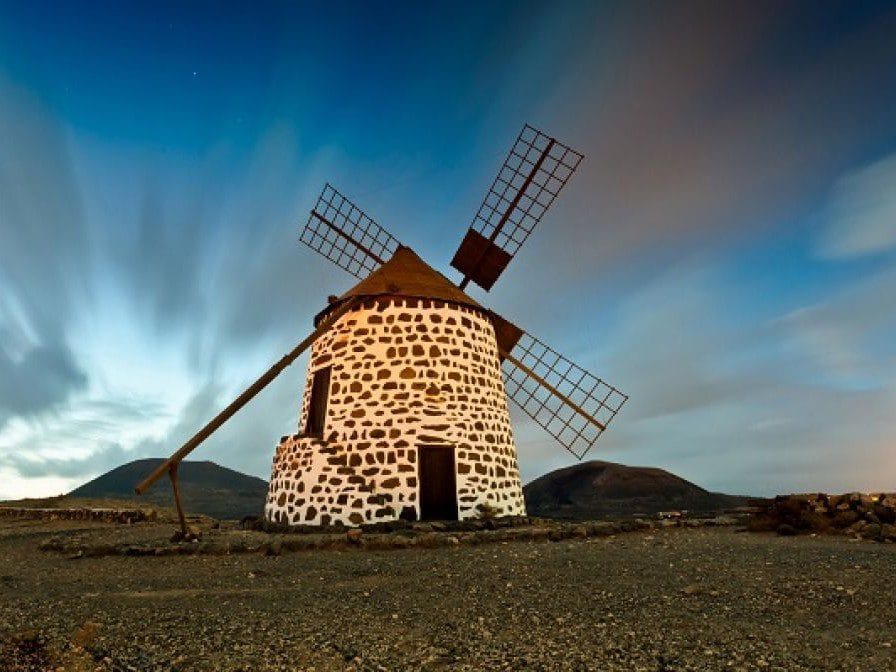
Brief History of Fuerteventura
Fuerteventura was the first island of the Canary archipelago to be colonized by Europeans in the 15th century. The arrival of the conquistadors marked the beginning of a period of change that would transform the lives of its inhabitants. The island was initially populated by the ‘majos’, an aboriginal community that had inhabited the place for centuries. In 1404, the island was subjected to the conquest of Jean de Béthencourt, a French nobleman who became the first governor of Fuerteventura.
Over time, the island developed as an important strategic point for trade and navigation. Over the centuries, its economy was based on agriculture, livestock and fishing. The influence of different cultures has also left its mark on the local architecture and customs.
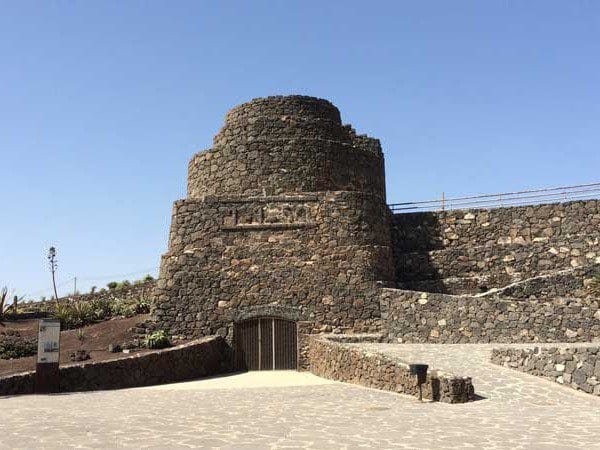
Cultural Heritage
The cultural heritage of Fuerteventura is varied and rich. The island is home to a large number of historic buildings, churches and monuments that testify to its past. The traditional buildings, many of them made of volcanic stone, are representative of the local aesthetics.
One of the most outstanding cultural manifestations is folk music, which includes instruments such as the timple and rondallas. Traditional dances are often performed at festivals and events, providing an authentic view of the island’s culture.
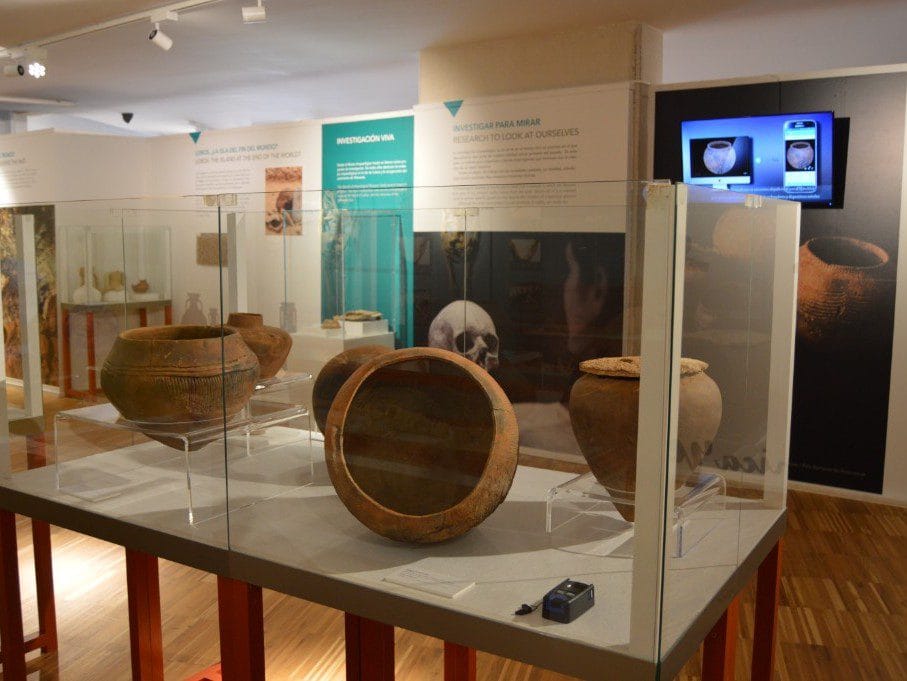
Museums and Visits of Interest
Fuerteventura museums offer an excellent opportunity to explore the history and culture of the island. They are spaces where you can learn about the life of the aboriginal ‘majos’, the conquest and other relevant aspects of their social evolution.
Betancuria and its History
Betancuria was the first capital of Fuerteventura and an administrative center during the colonial period. Founded in 1404, this town preserves a large part of its architectural heritage, including the church of Santa Maria, dating from the fifteenth century. Strolling through its streets is like traveling back in time, as many buildings retain their traditional style. Betancuria was also an important center of commerce and culture for centuries, being a key place in the history of the island.
Main Museums
- Museum of the History of Fuerteventura: This museum offers a detailed view of the evolution of the island from its origins to the present day. Exhibits on the geography, fauna and flora, as well as the history of its inhabitants, are presented in a didactic way.
- Majorero Cheese Museum: Dedicated to one of the most emblematic products of the island, this museum allows visitors to learn about the process of making Majorero cheese, from goat breeding to marketing.
- Craft Center of Fuerteventura: Located in the town of La Oliva, this center shows the craft traditions of the island, where you can see and purchase products made by local artisans.
Festivals and Cultural Events
Festivals in Fuerteventura are a celebration of local culture and traditions. Events such as the patron saint festivals, celebrated in various localities, include parades, live music and traditional dances. During Carnival, the island is filled with color and joy, with parades and elaborate costumes that reflect the creativity of the islanders.
Among the most outstanding cultural events are the craft fairs, which bring together local producers, offering a variety of typical products ranging from food to handicrafts. These activities are a way to promote cultural exchange and keep alive the traditions of Fuerteventura.
3. The Best Beaches of Fuerteventura
The beaches of Fuerteventura are one of the main attractions of the island. With its long stretches of white sand and crystal clear waters, there are several options to enjoy the sun and sea, as well as water activities for all tastes.
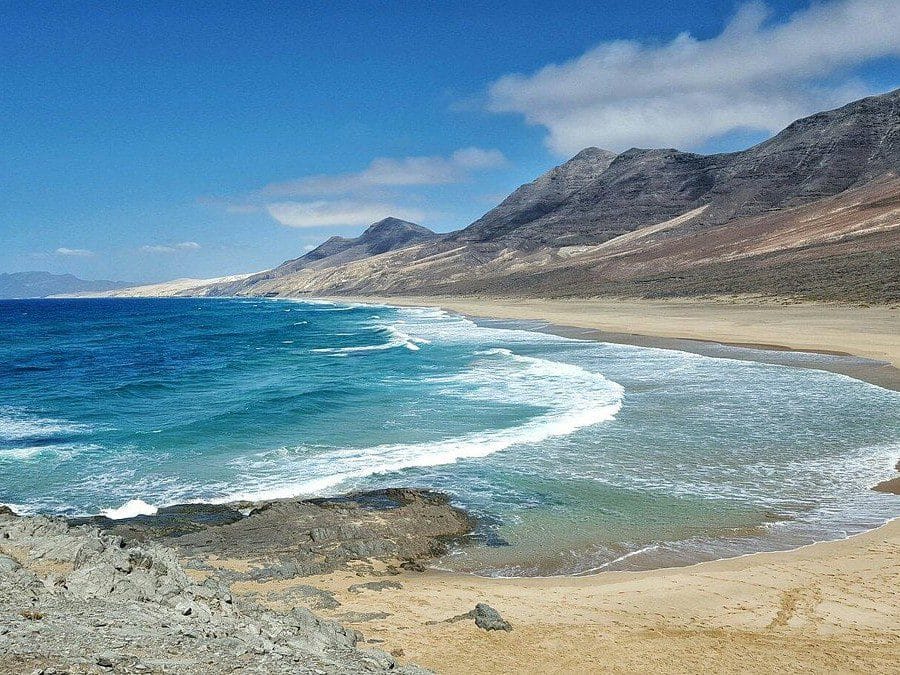
Cofete Beach
Cofete Beach is famous for its natural beauty and its almost virgin environment. Located in the Jandia peninsula, it is characterized by its desert and mountainous landscape. This beach stretches for more than 12 kilometers, which makes it an ideal place for those seeking tranquility and isolation.
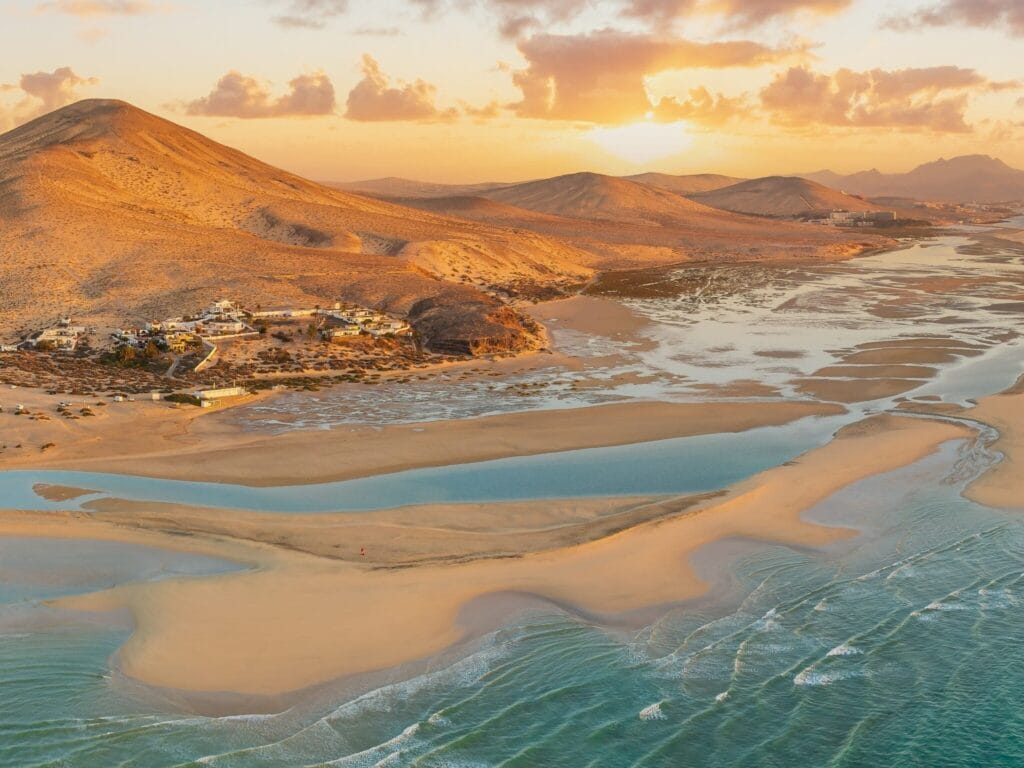
Sotavento Beach
Sotavento Beach is a paradise for water sports lovers. This extensive beach is famous for its constant winds, which makes it a privileged place for windsurfing and kitesurfing. The shallow waters allow even beginners to enjoy these activities.
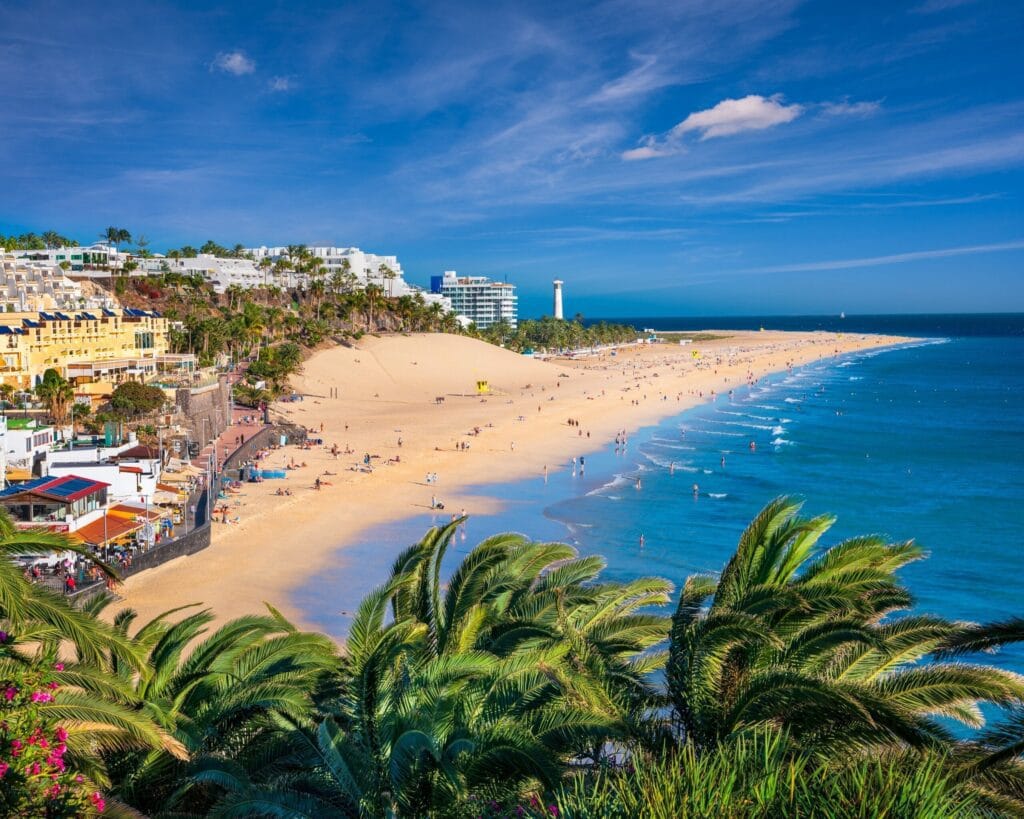
El Matorral Beach
Playa del Matorral is one of the most familiar beaches of Fuerteventura. It is located near Morro Jable and has all the necessary services to spend a pleasant day. The waters are calm and the sand is ideal for children to play and have fun.
This beach and its famous lighthouse are beautiful settings for sunset strolls.
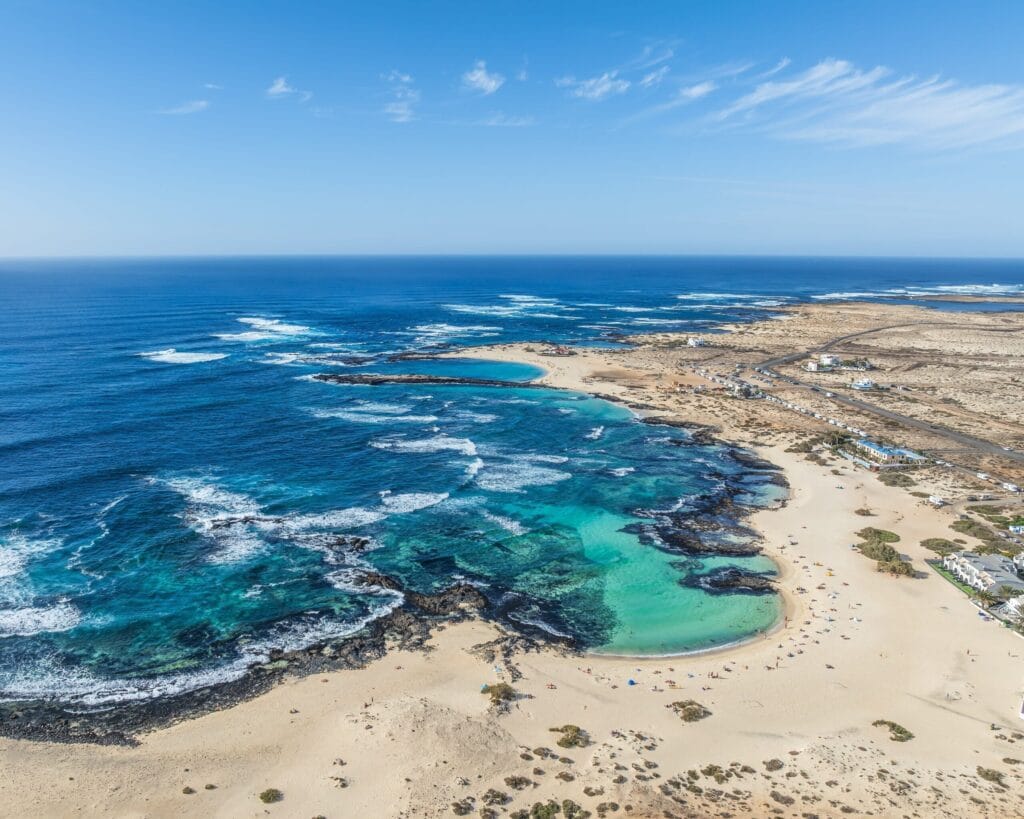
La Concha Beach
Located in the north of the island, Playa de la Concha is known for its idyllic setting and relaxed atmosphere. This small bay is surrounded by mountains and has calm waters, making it a perfect place for swimming and snorkeling.
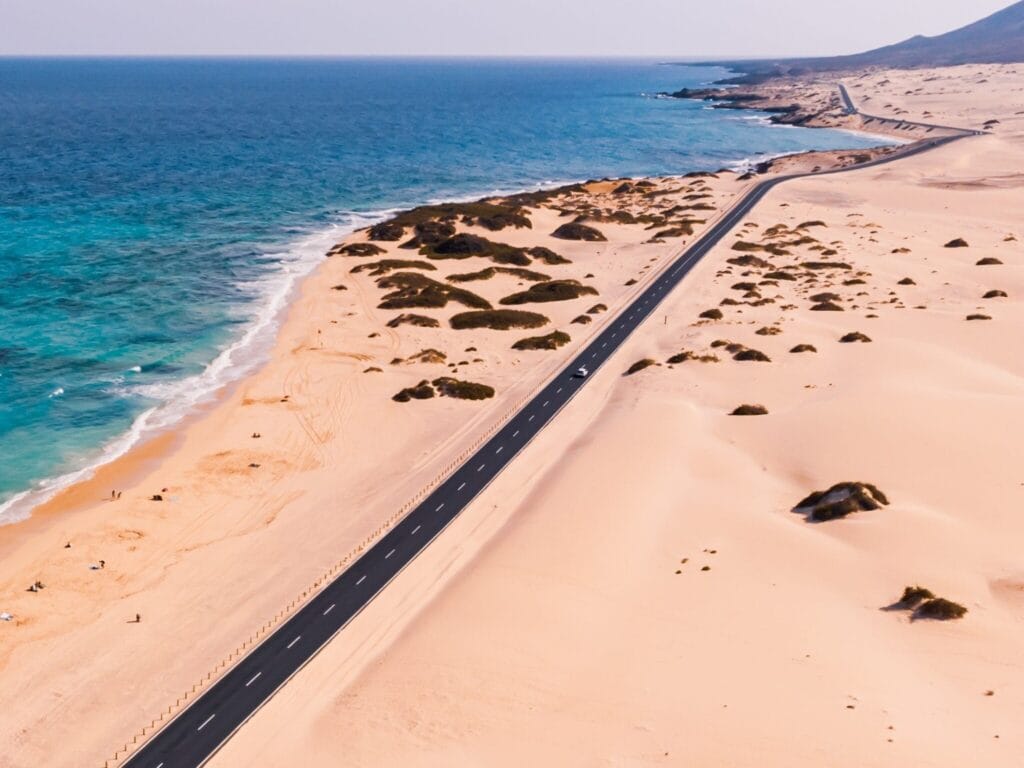
Corralejo Beaches
The beaches of Corralejo are known for their stunning beauty and diversity. This area has several beaches where white sand and clear waters are constant. The beaches of the natural park of the Corralejo Dunes are especially popular, offering a unique landscape of dunes that extend for several kilometers.
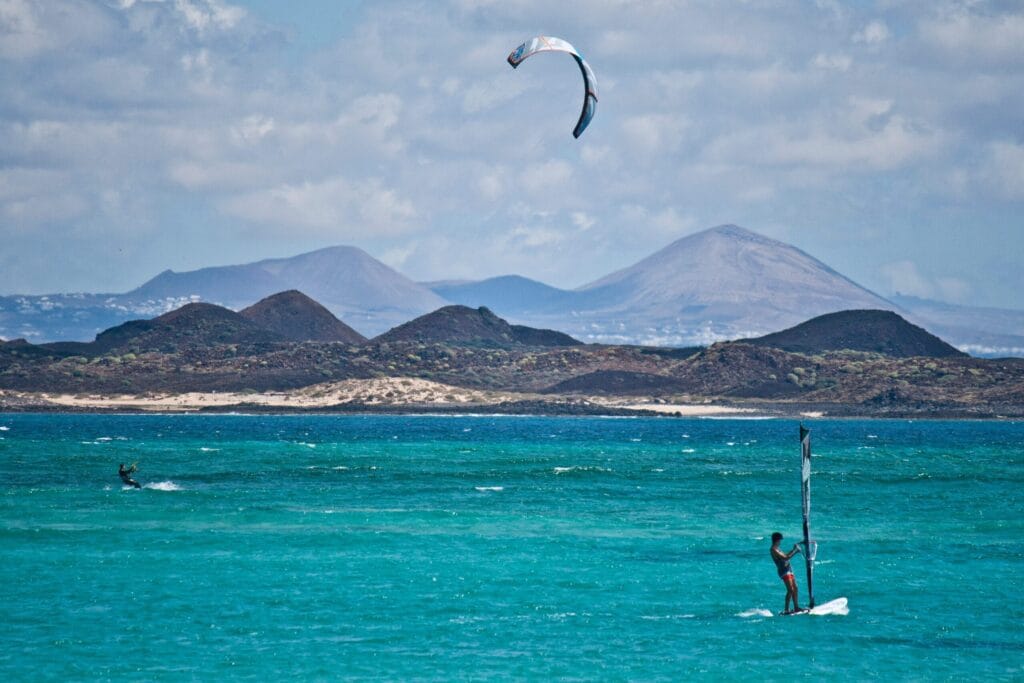
Beaches for Surfing, Windsurfing and Kitesurfing
Fuerteventura is a reference destination for water sports, thanks to its favorable climatic and geographical conditions. Many beaches offer ideal spaces for surfers, windsurfers and kitesurfers, especially in:
Sotavento Beach
Corralejo Beach
Jandia Beach
4. Protected Natural Spaces
Fuerteventura is home to a variety of protected natural areas that stand out for their biodiversity and scenic beauty. These places are essential for the conservation of the environment and are intended for the preservation of its flora and fauna, as well as for the enjoyment of visitors.
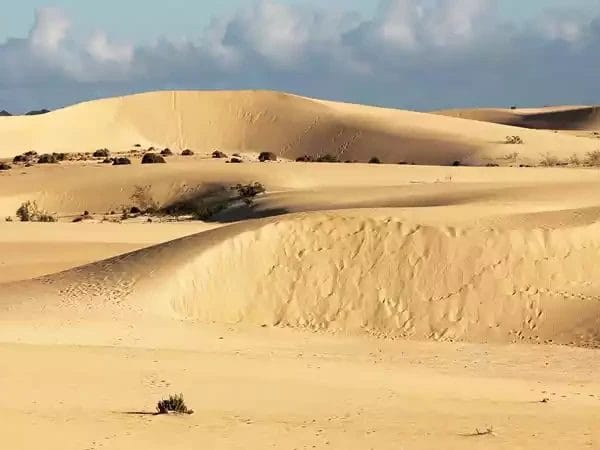
Corralejo Dunes
The Corralejo Dunes are a natural park that stretches for 10 kilometers along the northeast coast. This impressive landscape of white sand dunes, which in some sectors exceeds 50 meters in height, has been formed due to wind erosion and offers a unique environment.
The park is known for its biodiversity, harboring native species that are adapted to the desert conditions. In this space, visitors can practice various outdoor activities, such as hiking, cycling and water sports.
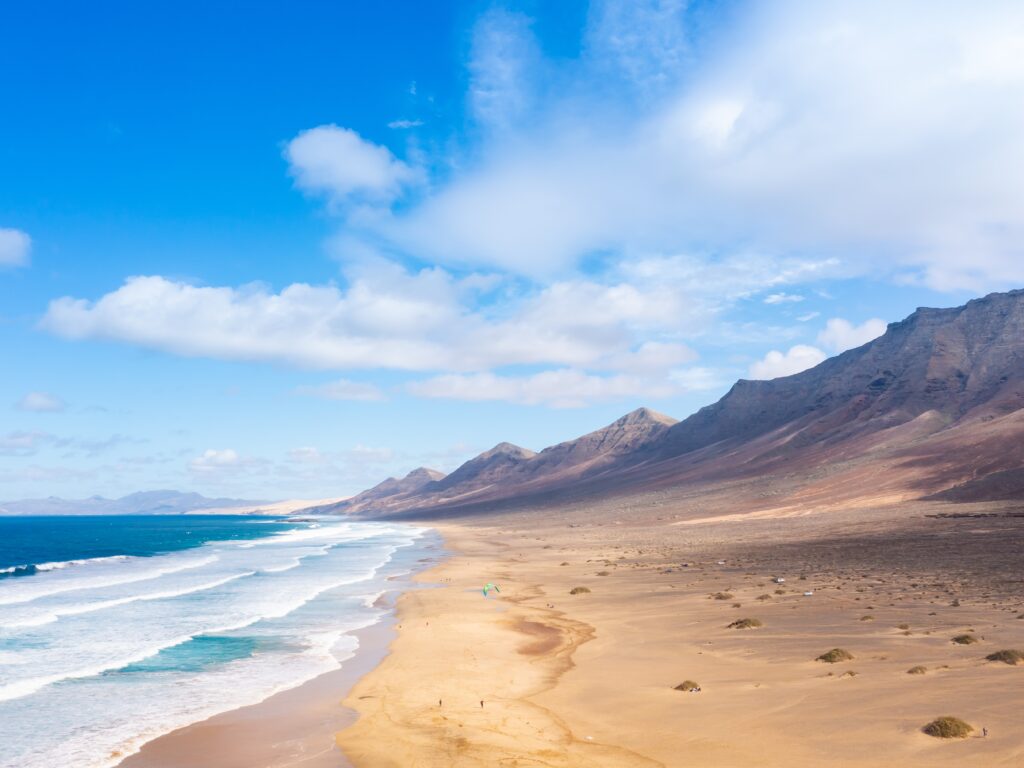
Jandía Natural Park
Located in the south of the island, the Natural Park of Jandia is a protected area covering a mountainous peninsula. This park is famous for its rugged landscape, where you can find numerous species of flora and fauna, as well as pristine beaches of great beauty.
The park offers hiking trails that allow you to explore its breathtaking views and rich biodiversity. The geological formations and the different climatic zones present in the park make Jandía a unique place for research and ecotourism.
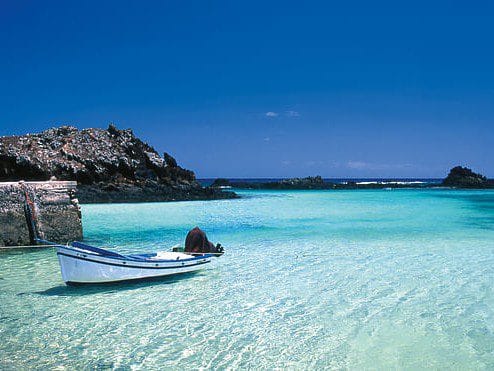
Lobos Island
Lobos Island is a small islet located a few kilometers north of Fuerteventura. This protected natural area is known for its endemic flora and crystal clear waters, perfect for water activities such as snorkeling and diving.
On the island, hiking trails take visitors through its arid landscapes and to an ancient lighthouse. The island’s biodiversity includes seabirds and a population of monk seals, which can be observed in their natural environment.
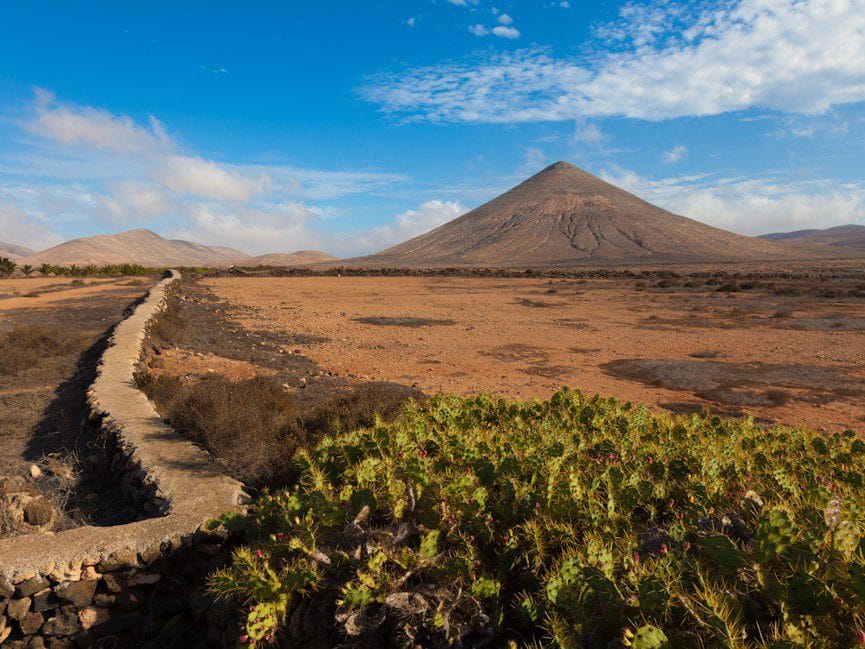
Tindaya Natural Monument
Tindaya Natural Monument is an emblematic site in Fuerteventura, famous for its sacred mountain and its cultural and historical importance. The mountain, which rises 400 meters above sea level, has been a place of worship since ancient times.
This protected area also has an environment rich in flora and fauna. The hiking trails in the area allow you to enjoy panoramic views and learn about the history and local mythology. Tindaya is a point of interest both for nature lovers and for those who wish to delve into the Majorcan culture.
5. Outdoor Activities
The natural environment of the island offers a wide range of outdoor activities, ideal for enjoying its scenic beauty. From water sports to hiking, Fuerteventura is a privileged place for adventure lovers.
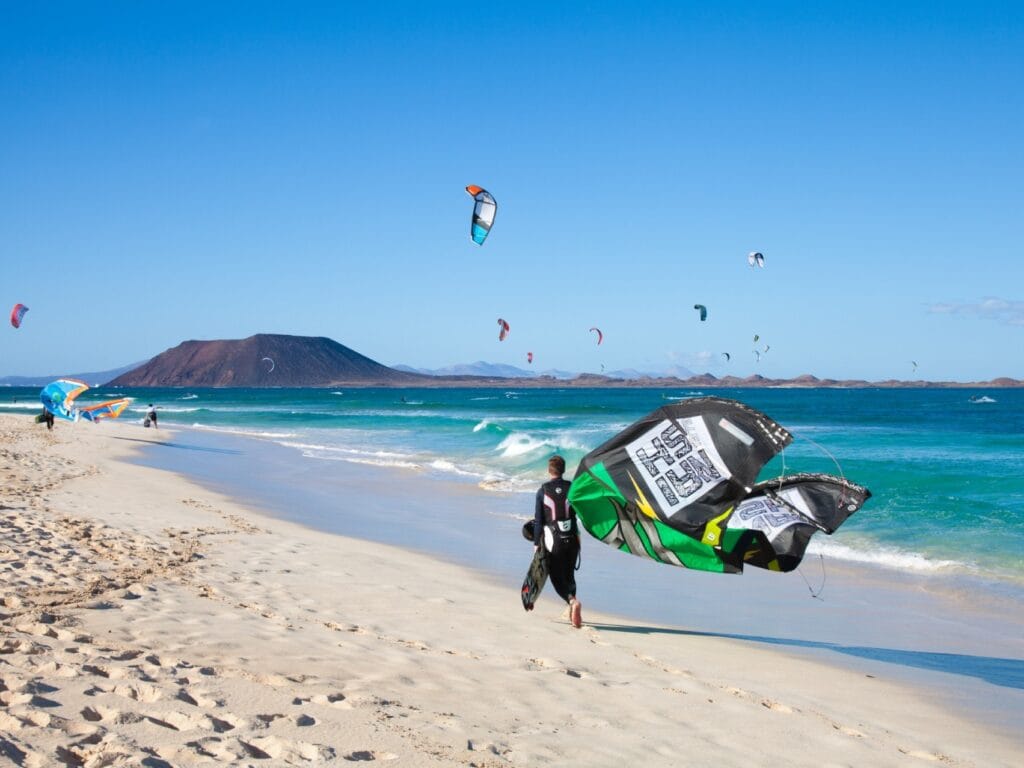
Water Sports
Fuerteventura is a real paradise for water sports enthusiasts. The weather conditions and its beaches make the island an exceptional place to practice various modalities.
Windsurf
Windsurfing has become one of the most popular sports in Fuerteventura. Beaches like Sotavento offer steady winds and calm waters, allowing beginners to learn and experts to enjoy complex maneuvers. Windsurfing schools are located in the most crowded areas, offering lessons and equipment rental.
Kitesurf
Kitesurfing is another very popular activity, thanks to the wide variety of beaches where it can be practiced. Sotavento and the coast of Corralejo are ideal for this sport. The winds in these areas are perfect for practitioners to enjoy the speed and acrobatics on the water. There are schools where you can receive classes of all levels.
Surf
Surfing attracts many visitors, especially those looking for better waves. The island’s beaches, such as El Hierro and La Pared, are known for their challenging waves. Rental equipment and lessons are available for those who wish to get started in this exciting activity or improve their skills.
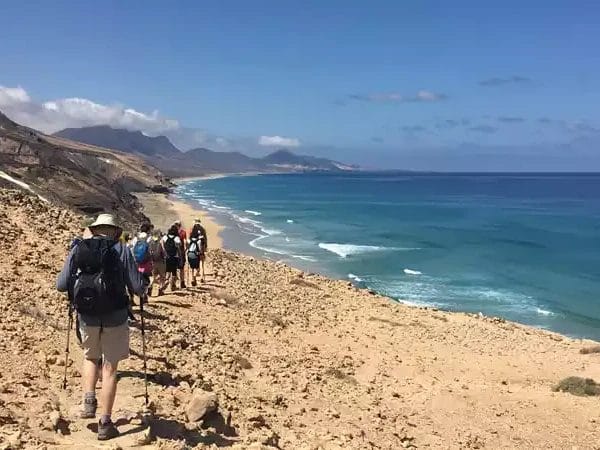
Hiking
Fuerteventura offers a network of trails that allows you to explore its unique landscapes. From coastal routes with breathtaking views to trails through mountainous areas, hiking enthusiasts will find options for all levels.
Tindaya Route
The Tindaya Route is an outstanding route that takes hikers to the base of Mount Tindaya, a place of cultural and natural importance. This route is accessible and allows you to enjoy the native flora and fauna, as well as panoramic views of the surrounding area.
Viewpoints of Fuerteventura
The island has several lookout points that provide spectacular panoramic views, perfect for those seeking to capture the beauty of the landscape. The viewpoints strategically located along the hiking trails are the ideal place to rest and contemplate the natural surroundings.
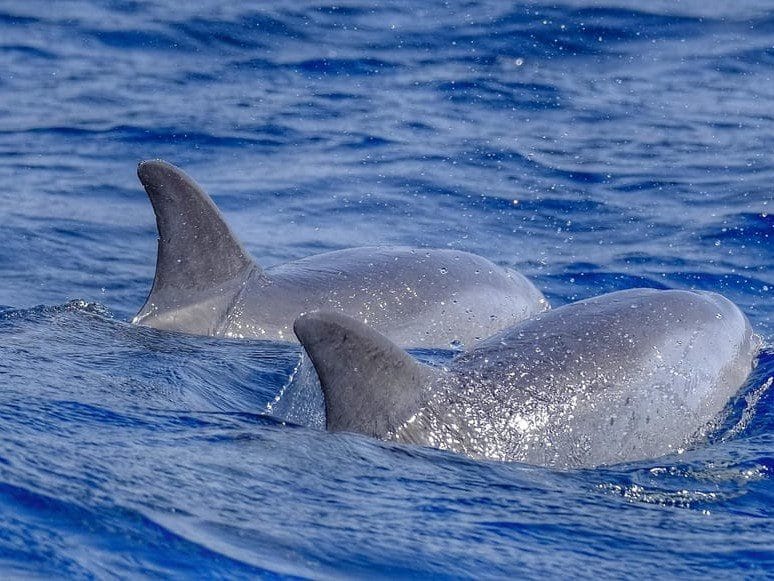
Whale Watching
The waters around the island are rich in marine life, which makes it possible to organize whale-watching excursions. During these activities, it is possible to observe dolphins, whales and various marine species in their natural habitat. These experiences are especially popular among those seeking a closer contact with nature.
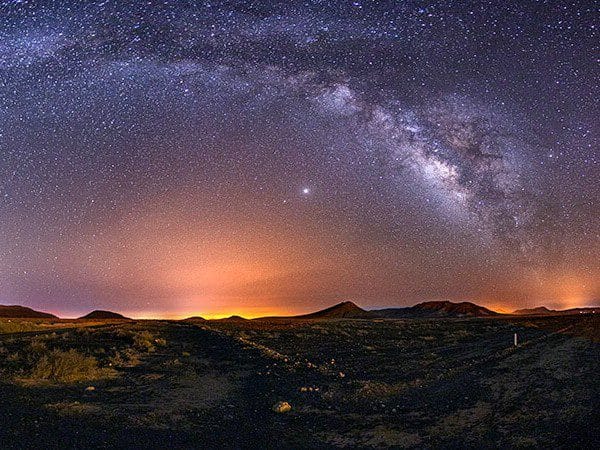
Stargazing
The low light pollution of Fuerteventura provides ideal conditions for stargazing. Several areas of the island offer the opportunity to enjoy clear skies, full of constellations. Many visitors participate in guided night tours that enrich the experience through information on astronomy and celestial bodies visible from the island.
6. Points of Interest in Fuerteventura
Fuerteventura offers a variety of points of interest that reflect its rich history, culture and natural beauty. From museums to coastal areas, each place has its own uniqueness and appeal.
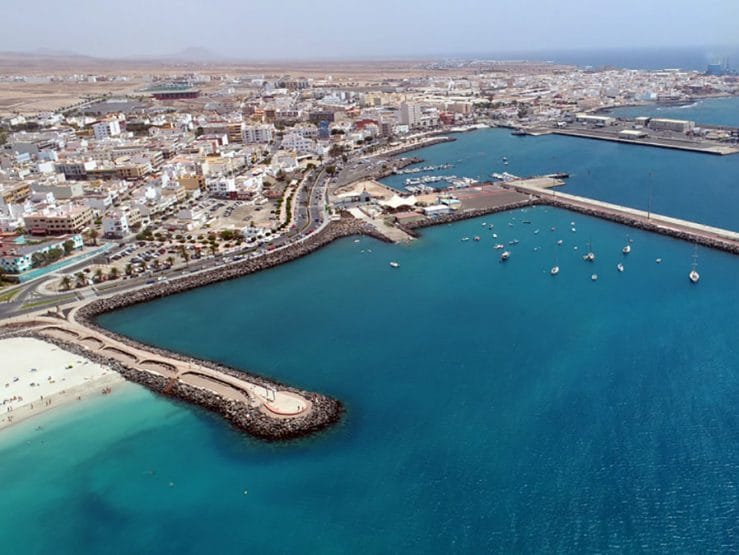
Puerto del Rosario
The capital of the island, Puerto del Rosario, is an essential point to know the local life and culture majorera. Through its buildings, streets and public spaces, you can feel the essence of Fuerteventura.
Unamuno House Museum
This house was the residence of the famous Spanish writer and philosopher Miguel de Unamuno during his exile in Fuerteventura. Currently, it functions as a museum that houses a collection of documents, letters and personal items related to Unamuno. The visit to this space allows an introspection into the life and work of this relevant character, as well as a glimpse into the history of the island during that time.
Juan Ismael Art Center
This center is a tribute to the Canarian artist Juan Ismael, whose works are a reflection of the identity and culture of Fuerteventura. The space houses temporary and permanent exhibitions that show a variety of artistic manifestations. It is a place where you can appreciate contemporary art and Ismael’s connection with the landscape of the island, as well as his influence on other local artists.
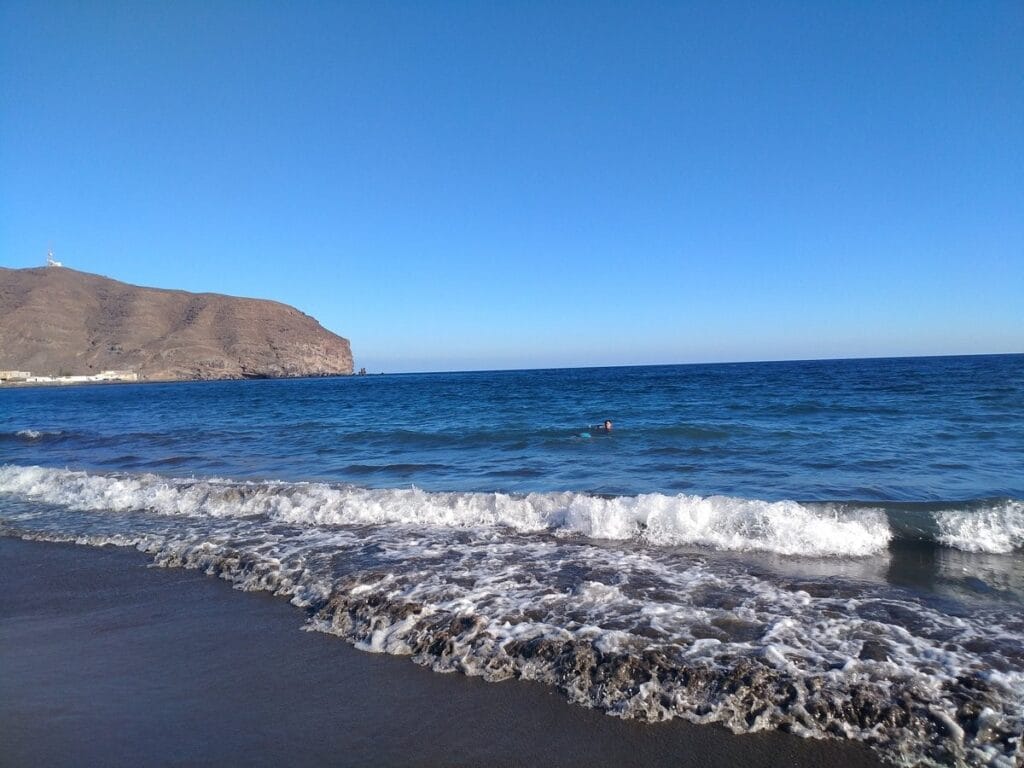
Gran Tarajal and Morro Jable
Gran Tarajal is a coastal town that stands out for its traditional and authentic atmosphere. Its beaches are ideal to enjoy the sun and the sea. The town is characterized by its active fishing port and its delicious cuisine based on fresh fish.
Morro Jable, located in the south of the island, is known for its long beaches and lively nightlife. This place attracts tourists looking to enjoy water activities, as well as its varied offer of restaurants and stores. Morro Jable’s proximity to natural areas adds to its attractiveness.
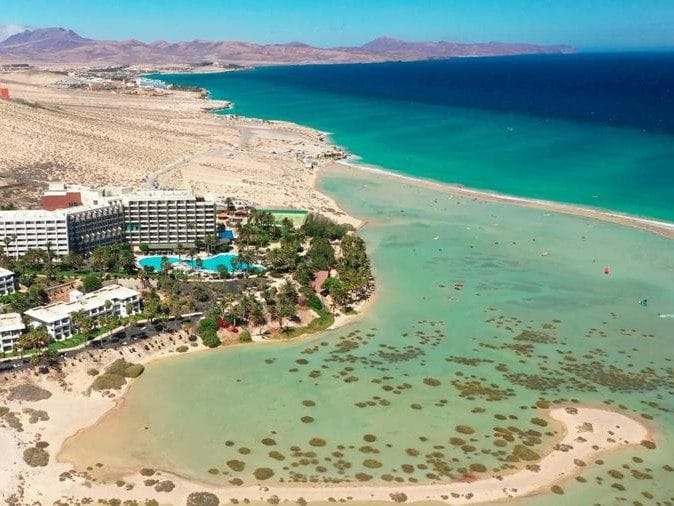
Costa Calma
Costa Calma is a popular destination for its quiet golden sandy beaches and clear waters. This place is perfect for both relaxation seekers and water sports enthusiasts. In the region, you can find various facilities offering activities such as windsurfing and kitesurfing. The relaxed atmosphere and panoramic views make Costa Calma an ideal place to spend the day.
7. Fuerteventura Gastronomy
Fuerteventura's gastronomy is a reflection of its history and tradition. The influence of different cultures has created a rich culinary offer that stands out for the use of local ingredients and traditional recipes.
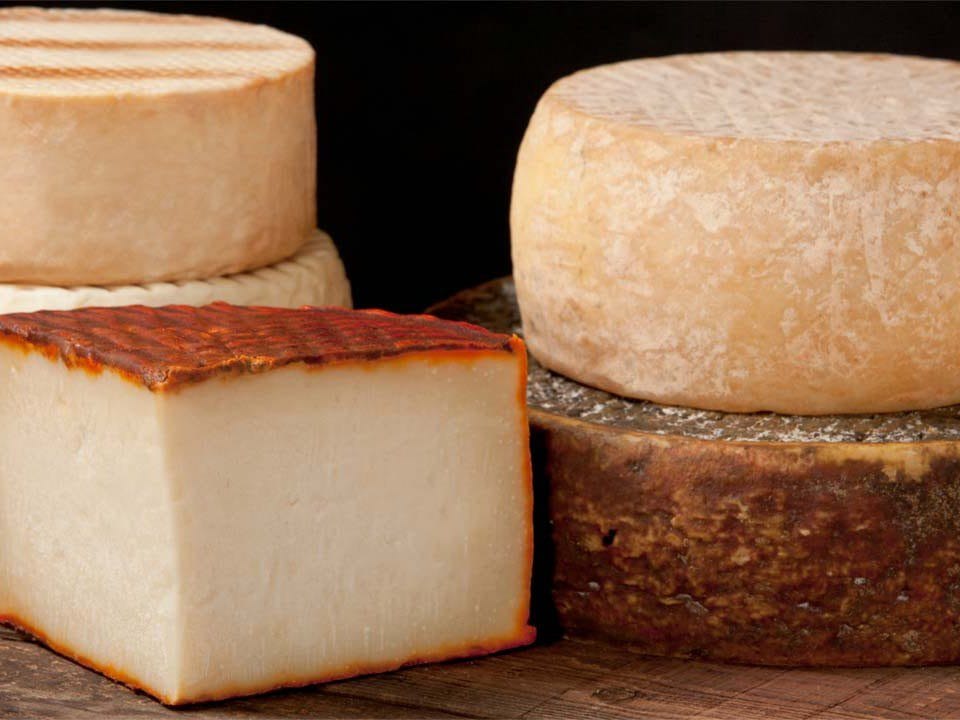
Majorero Cheese
Majorero cheese is one of the most emblematic products of Fuerteventura. Made from goat’s milk, its flavor and texture have earned it multiple national and international awards. This cheese can be found in different varieties, from fresh to cured, each with its own characteristics that make it unique.
The production process follows artisanal techniques that have been passed down from generation to generation. The island’s farmers use natural pastures, which contributes to the quality of the final product. It is not uncommon for visitors to come across local cheese dairies where they can taste and buy this delicacy, as well as learn about its production.

Traditional Dishes
Fuerteventura’s cuisine includes a variety of dishes that reflect its cultural heritage. Fresh ingredients are essential, as the island has a rich availability of products from the sea and the countryside.
Gofio
Gofio is a staple food in the Canarian diet. This product is made from toasted and ground cereals, generally wheat or corn. It is very versatile and can be consumed in different ways: mixed with water or milk, used as an accompaniment to stews, or even in desserts. Its nutritional value and characteristic flavor make it a highly appreciated food by the locals.
In Fuerteventura, gofio is also used in traditional dishes such as “gofio escaldado”, which is prepared with fish or meat broth, and in dessert recipes such as “gofio con miel” (gofio with honey). It is a constant presence on tables and at family celebrations.
Fresh Fish
Fresh fish is another of the pillars of the local gastronomy. The island’s proximity to the Atlantic Ocean guarantees the availability of a wide variety of marine species. Among the most consumed fish are tuna, gilthead bream, and sampedro, all prepared grilled, baked or in stews.
The island’s restaurants offer delicacies such as “fish with mojo”, where it is accompanied with traditional Canarian sauces of green mojo or red mojo. Any visit to Fuerteventura is incomplete without enjoying a plate of fresh fish, which symbolizes the lifestyle of the sea and the local culture.
8. How to get to Fuerteventura
You can reach Fuerteventura by plane, through the international airport (FUE), or by ferry from Lanzarote, Gran Canaria or Tenerife.
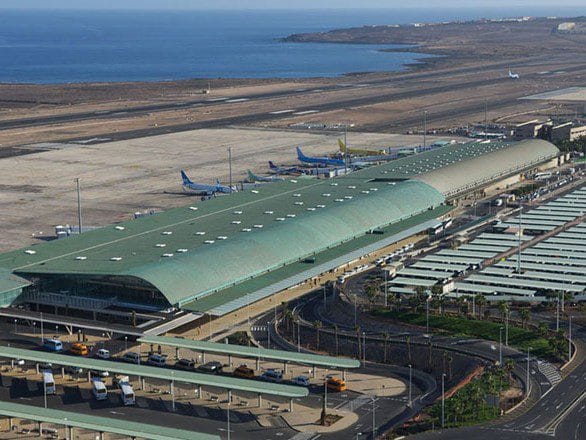
Fuerteventura Airport
Fuerteventura Airport (FV) is located near the capital, Puerto del Rosario. It is the main entry point to the island and receives both domestic and international flights. This airport offers various amenities and services to make the arrival of travelers more comfortable.
The airport has a variety of airlines operating regular routes to different cities in Spain, such as Madrid, Barcelona and Malaga. In addition, several airlines offer connections to European countries, allowing easy access from different locations.
Airport facilities include:
- Restaurants and cafeterias offering a varied service.
- Stores with local products and souvenirs.
- Car rental to facilitate mobility on the island.
- Tourist information to help visitors plan their stay.

Ports and Ferries
Fuerteventura can also be reached by sea, thanks to its ports offering ferry services. This mode of transport is especially popular for those traveling from other islands of the Canary archipelago, such as Lanzarote or Gran Canaria. Traveling by ferry allows you to enjoy spectacular views of the ocean and nearby islands.
The main ports connecting Fuerteventura with other islands are:
- Port of Corralejo: Frequently connected to the port of Playa Blanca in Lanzarote, this port is one of the busiest.
- Port of Morro Jable: An important connection point with Gran Canaria, this port offers several daily departures.
Ferries are a recommended option for those who wish to bring their vehicle to the island or simply enjoy a relaxing trip by sea. The duration of the trip varies according to the route, but generally remains between 30 minutes and 1 hour.
9. Fuerteventura for Families with Children
The island is an attractive destination for families looking to enjoy a unique vacation. It offers multiple entertainment and fun options for the little ones, guaranteeing a memorable experience for everyone.
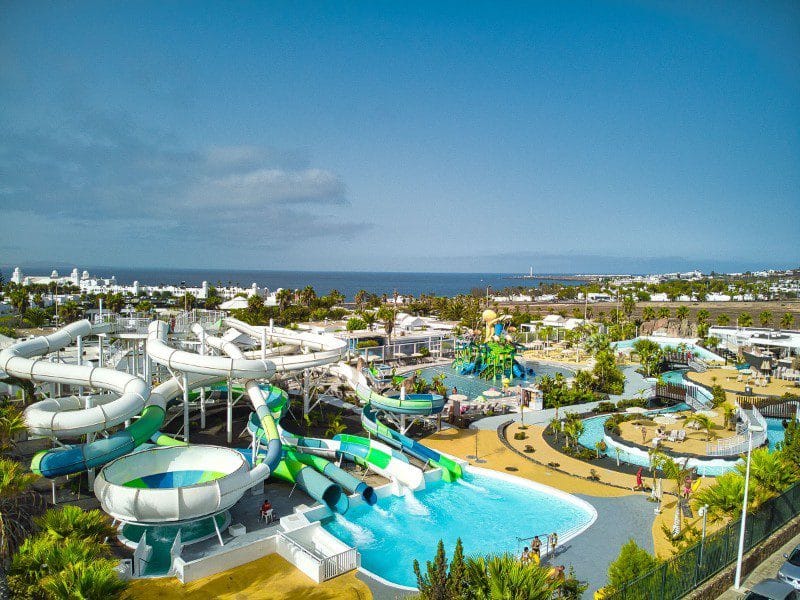
Places of Interest for Children
Fuerteventura has a variety of places that will capture the attention of children and allow them to make the most of their stay on the island:
Corralejo Natural Park
This park is ideal for children to have fun exploring the sand dunes and beaches. They will be able to run free and play outdoors in a breathtaking natural environment.
Puerto del Rosario
In the island’s capital, families can take advantage of a variety of activities
Aqualava Waterpark
Located in Playa Blanca, this water park offers slides, pools and playgrounds, perfect for a day of family fun in a safe and entertaining environment.
Lobos Island
This small island near Fuerteventura is an excellent place for a boat trip. Children will enjoy marine life watching and snorkeling activities.
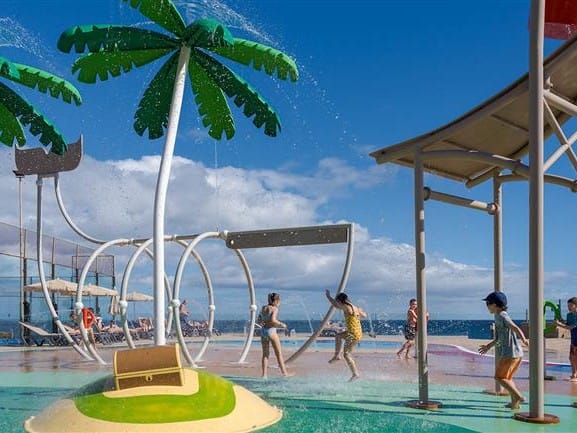
Activities for Children
In addition to the places of interest, there are numerous activities adapted for the little ones, ensuring that every day on the island is an unforgettable adventure:
Water Sports
Fuerteventura offers water sports options suitable for children, such as surfing lessons and paddle surfing. These activities are not only fun, but also a great opportunity for children to learn new skills in a safe environment.
Family Hiking
Simple routes and fascinating landscapes are perfect for hiking with children. There are signposted routes that can be explored with the family, such as the easy route to Tindaya Mountain.
Whale Watching
Dolphin and whale watching excursions are fascinating experiences that will excite the little ones. This activity, in addition to being fun, is educational
Adventure Activities
Adventure parks where children can climb, slide and explore guarantee fun for all ages. Many of these facilities offer circuits adapted to different skill levels.
